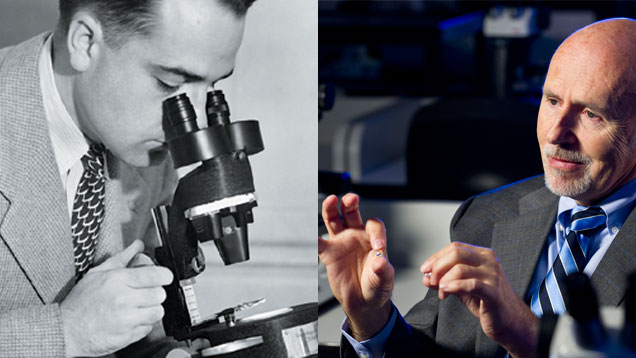Liddicoat and Koivula Honored by the French Association of Gemmology

GIA gemologists named among top 50 in gem history
CARLSBAD, Calif. – Sept. 16, 2013 – Two globally important gemologists – John I. Koivula and the late Richard T. Liddicoat – have been named among the 50 personalities and events that have shaped the history of gems by the French Association of Gemmology. Liddicoat, the former GIA president widely considered the “Father of Modern Gemology,” was recognized along with Koivula in the modern and contemporary gemology category. Koivula, GIA’s chief research gemologist, was honored as part of a Sept. 5 event in Paris celebrating the association’s 50th anniversary.“It’s truly an honor to be recognized alongside these great people and events,” said Koivula. “I had the pleasure of working with Mr. Liddicoat for many years, and his passion and dedication to researching gems still inspires many – including me – to this day. I’m grateful to the French Association of Gemmology for including me in this esteemed group.”
Liddicoat joined GIA in 1940 as the assistant director of education where his early work on colored stones led to the publication of his Handbook of Gem Identification in 1947. He succeeded Robert Shipley as GIA’s executive director in 1952 and became editor-in-chief of Gems & Gemology, a position he held for fifty years. Liddicoat was the architect of GIA’s D-to-Z diamond grading system, which is recognized by virtually every jeweler in the world today. He coauthored first editions of The Diamond Dictionary and The Jewelers’ Manual, and expanded GIA’s educational offerings internationally, starting with a Japanese affiliate in 1971. Upon stepping down as GIA president in 1983, Liddicoat was named chairman of its board of governors, a position he held until his death in 2002.
Koivula joined GIA in 1976 and has spent more than 50 years studying and photographing the microworld of gemstones, and has published more than 800 articles and notes on gemstone inclusions and related topics. He is a noted authority on microscopy, photomicrography and gem inclusions, and the author of MicroWorld of Diamonds, co-author of the three-volume Photoatlas of Inclusions in Gemstones, and co-author of Geologica, a book on geological landforms. In addition to his many gemological diplomas, he holds bachelor’s degrees in chemistry and geology from Eastern Washington State University and is a Fellow of the Royal Microscopical Society. He has been named one of the 64 most influential people of the 20th century in the jewelry industry by JCK magazine.



